Teaching your dog new tricks is a rewarding experience and a fundamental aspect of responsible pet parenting. Beyond mere entertainment, Good Tricks To Teach A Dog play a crucial role in your canine companion’s development, fostering impulse control, mental stimulation, and physical fitness. Engaging in regular dog training sessions helps your pet develop essential skills, improve their behavior, and boost their understanding of the world around them. A dog that consistently understands and executes commands will navigate interactions with other animals and humans much more effectively, contributing to a harmonious household.
1. Sit
The “sit” command is arguably the most fundamental trick every dog owner should impart to their pet. It serves as the cornerstone for many other dog tricks and forms the basis for polite behavior. Once your dog has mastered “sit,” they will find it significantly easier to grasp more complex commands. Teaching your dog to “sit pretty” can also be a delightful variation to showcase their skills to friends and family.
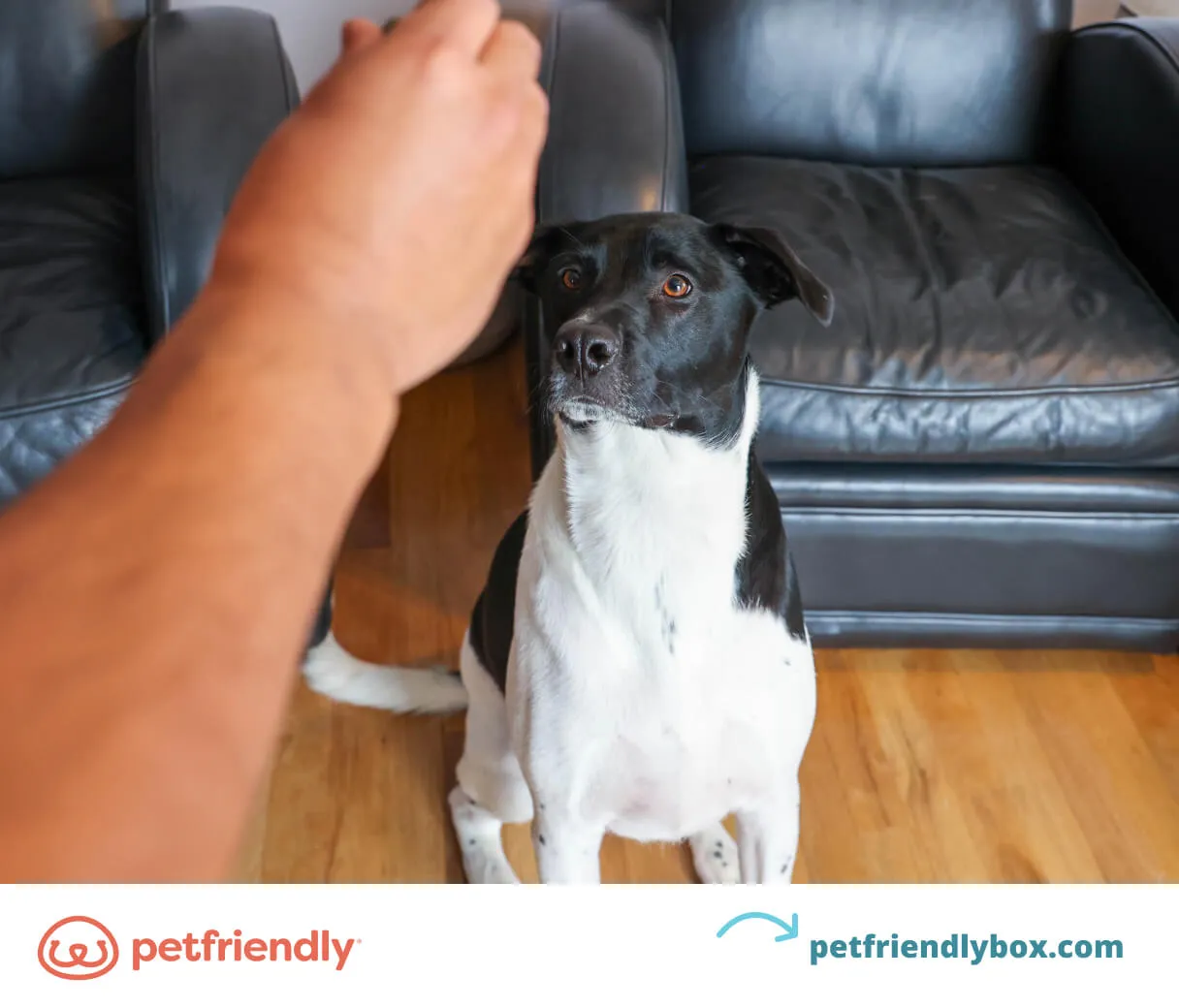 Dog sitting politely on a wooden floor, demonstrating the 'sit' command
Dog sitting politely on a wooden floor, demonstrating the 'sit' command
How to teach your dog to sit
To begin teaching your dog to sit, hold a high-value dog treat close to your dog’s nose while they are standing. Slowly arc the treat over their head towards their rear end. As your dog’s nose follows the treat, their natural movement will guide them into a sitting position. As soon as your dog sits, immediately say the command “sit,” reward them with the treat, and offer enthusiastic verbal praise such as “yes” or “good dog.” Repeat this process consistently until your pet readily sits upon hearing the verbal command.
2. Stay
Teaching your dog to “stay” is a critical obedience command and one of the most basic yet essential good tricks to teach a dog. This command allows you to keep your dog safely in one place, whether to prevent them from approaching strangers, other animals, or potentially hazardous situations. “Stay” is invaluable for developing a young pup’s impulse control, a skill that will remain with them as they mature.
How to teach your dog to stay
Start by having your dog in a sitting position using the “sit” command. Once they are seated, reward them with a treat and praise. While your dog is seated, clearly say the verbal cue “stay.” Wait for just a few seconds. If your dog remains seated and hasn’t moved, say their designated release word and then reward them. Repeat this process, gradually increasing the duration your dog must “stay” before receiving the reward. As your dog begins to associate the command with remaining in place, try giving the command and taking a few steps away from your pet. For an added challenge, you can increase the duration, introduce mild distractions, or even briefly leave the room.
Understanding Release Words
Experienced dog trainers often incorporate release words to signal to a dog that a command is complete and they are free to move. Introducing a specific release word tells your dog they are done with the “stay” trick. Common release words include “O.K.,” “Release,” “Go,” “Break,” or “Free.” Your chosen release word can be anything you prefer, as long as you use it consistently. Practice the full “stay” command until your dog perfects it, then introduce the release word. Repeat this sequence until your dog reliably stays put until you give their release word. This reinforces excellent impulse control and ensures your dog understands the boundaries of the command. For more advanced training ideas, explore the best tricks to teach your dog.
3. Come
Teaching your dog to “come” when called is a fundamental safety command and one of the most vital good tricks to teach a dog. It can be incredibly stressful and dangerous if your dog runs off and ignores your calls. The “come” or “here” command can literally save your dog’s life in dangerous situations, such as if they wander near a busy road or an aggressive animal. Moreover, a dog that reliably comes when called allows for more relaxed off-leash excursions, giving your pet the freedom to explore while providing you with peace of mind.
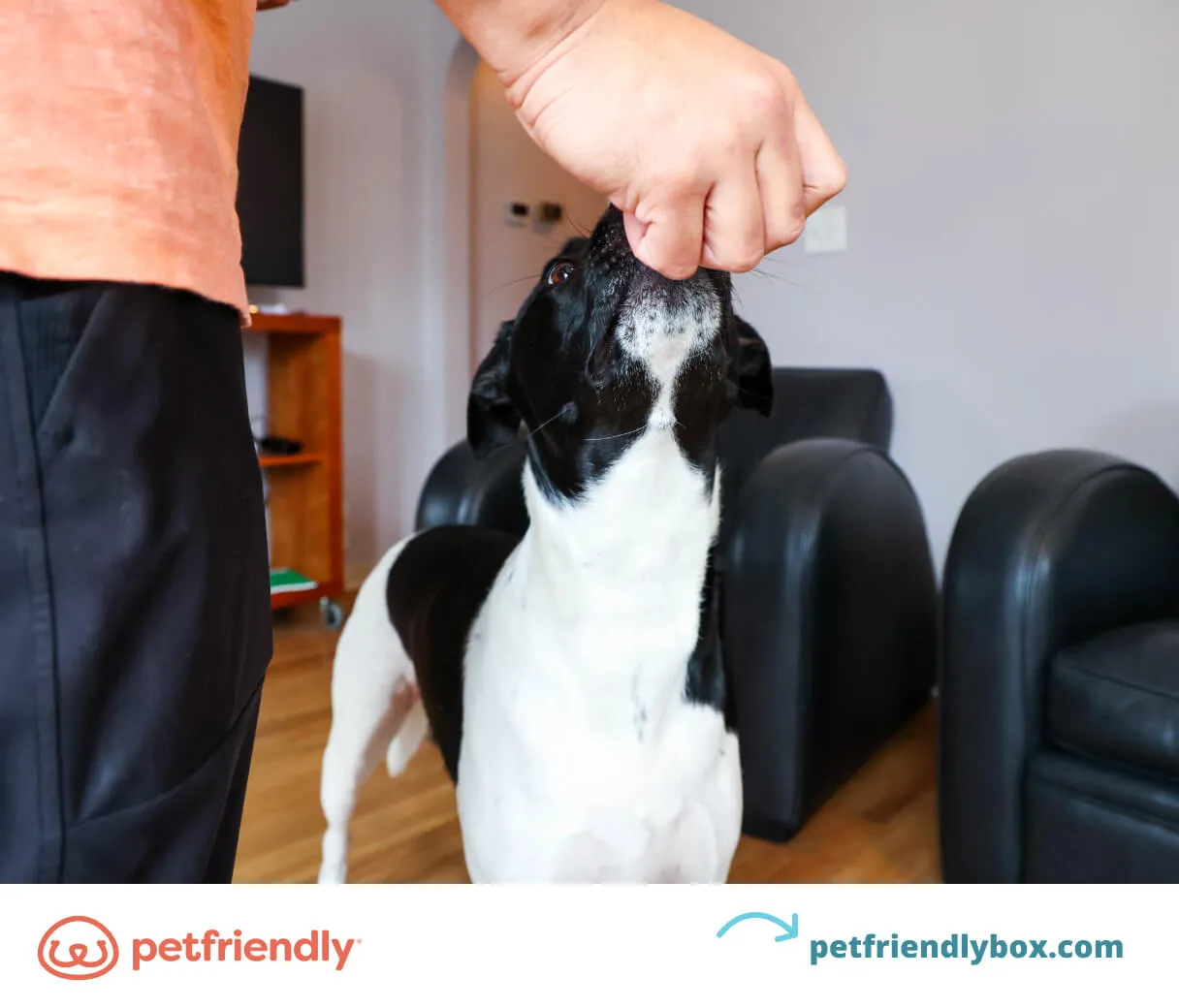 Dog running happily towards its owner, demonstrating the 'come' command
Dog running happily towards its owner, demonstrating the 'come' command
How to teach your dog to come when called
Begin by standing a few yards away from your pet in a safe, open space. Clearly say your dog’s name, followed by the command “come” or “here.” As your dog starts moving towards you, provide enthusiastic positive reinforcement, cheering them on with phrases like “good dog!” When your dog reaches you, reward them with a high-value treat, generous pets, and praise to reinforce their excellent work. After the reward, say your pet’s release word and wait a few moments before practicing the command again. This positive association ensures your dog views coming to you as a rewarding experience.
4. Leave It
The “leave it” command is designed to teach your dog to ignore tempting items on the ground or within reach that are not meant for them. This command is a powerful safety tool. For instance, if you accidentally drop a piece of food that’s toxic to dogs or some medication, telling your dog to “leave it” can prevent them from ingesting something harmful. Once your dog has learned this trick, they should instinctively look to you for approval before attempting to eat anything they find on the ground.
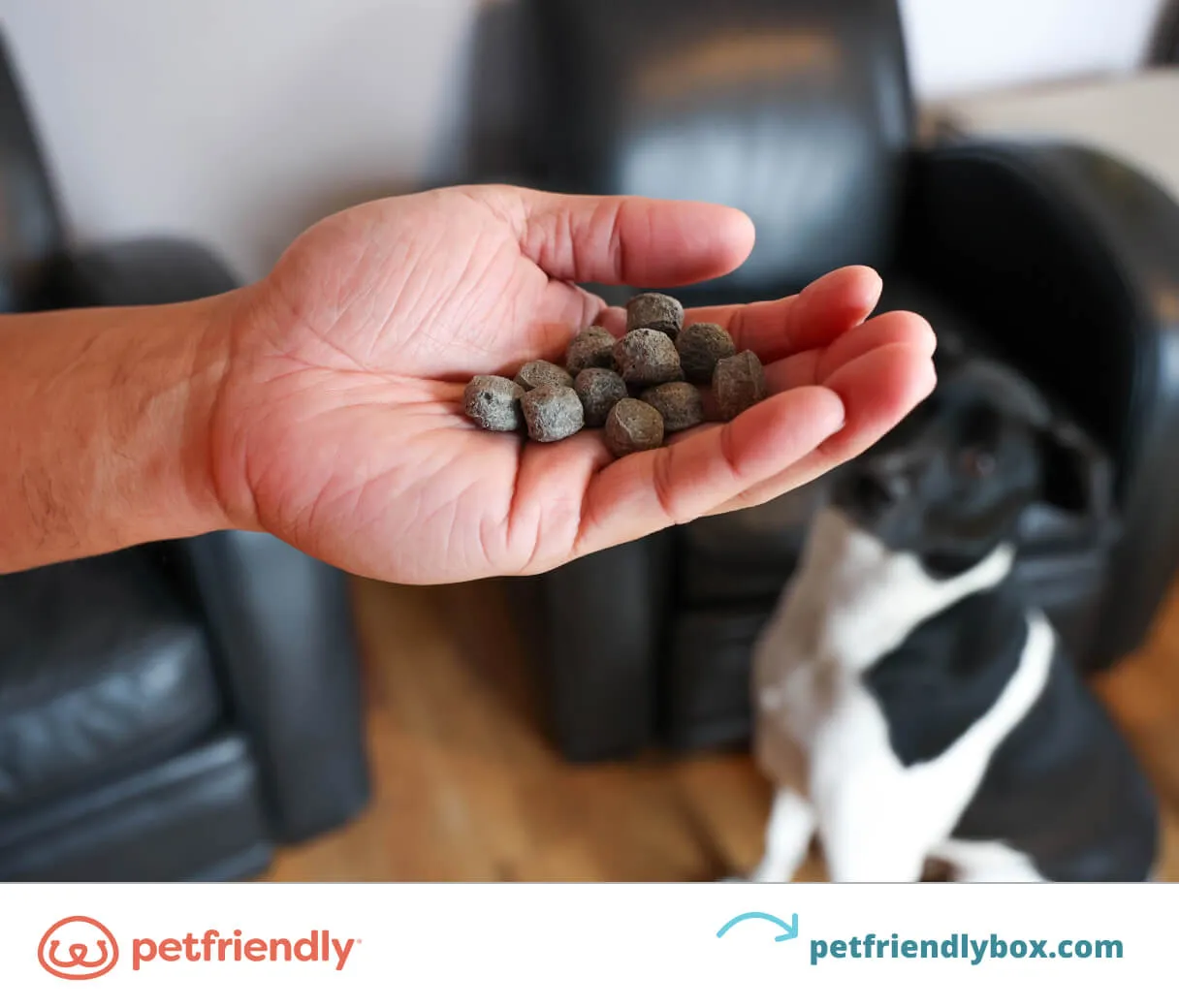 Dog looking away from a treat on the ground, demonstrating the 'leave it' command
Dog looking away from a treat on the ground, demonstrating the 'leave it' command
How to teach your dog to leave it
To teach your dog “leave it,” place a treat in your closed hand and present your hand on the ground in front of your dog. Say the verbal cue “leave it.” Let your dog try to get the treat from your closed hand. As soon as they stop trying and pull away, even for a second, reward them with praise and say their release word. Then, allow them to have the treat from your hand. Repeat this process until your dog ignores the treat in your closed hand for several seconds. Next, try the same command with a treat in your open palm. Once your dog consistently leaves the treat in your open palm alone, increase the challenge by dropping a treat onto the floor and immediately saying “leave it.” After a few seconds, say the release word, and then allow them to have it. Consistent positive reinforcement is key throughout this training. With practice, your dog will learn to ignore temptations until you give them the release word or remove the undesirable object.
5. Down
The “down” command is incredibly useful for everyday life situations. It allows you to ask your dog to be still and relaxed, which is particularly helpful during vet visits, when guests arrive at your home, or in any situation where a calm, settled dog is desired. It’s an essential obedience command among the good tricks to teach a dog.
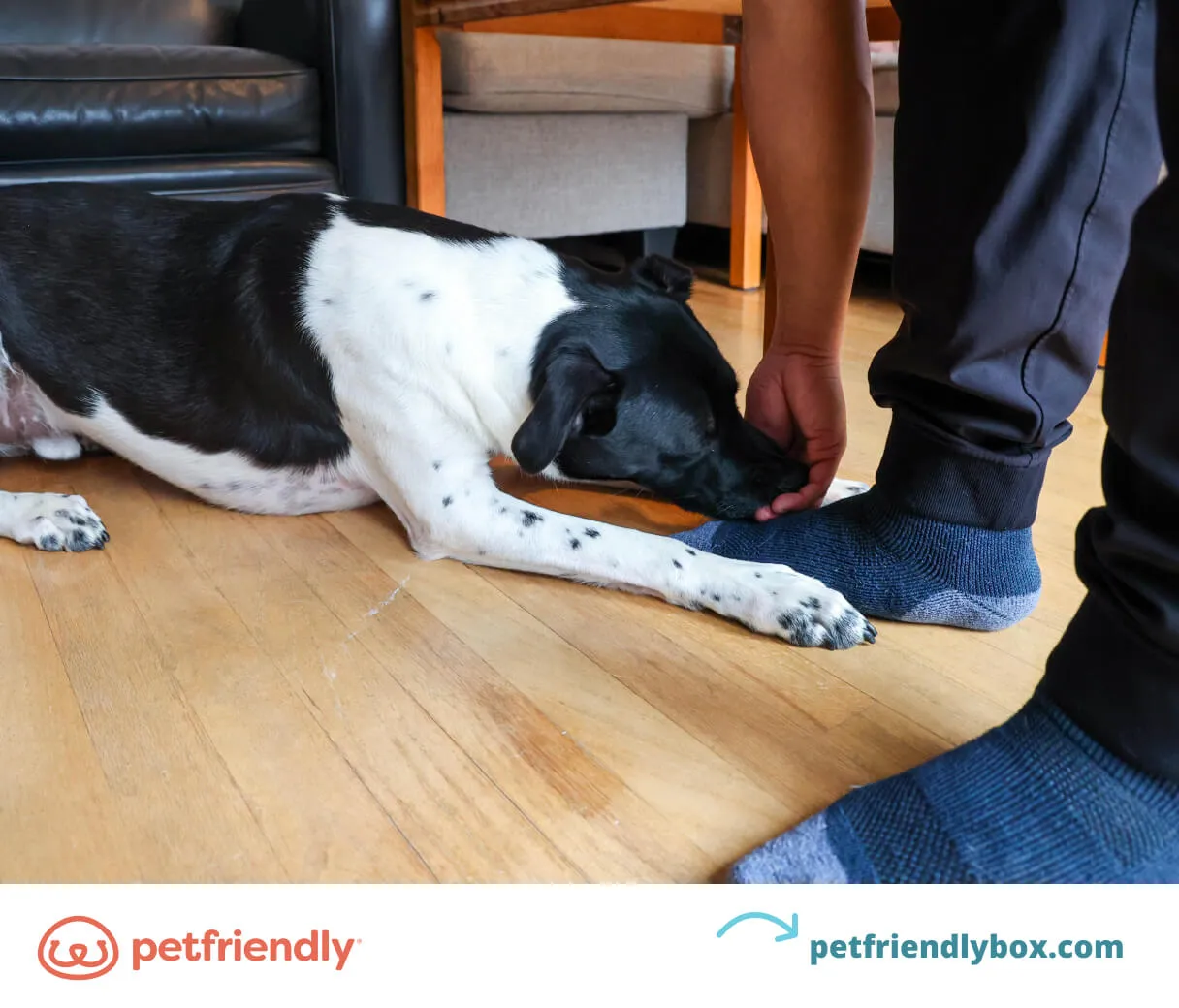 Dog lying down calmly, demonstrating the 'down' command
Dog lying down calmly, demonstrating the 'down' command
How to teach your dog down
To teach your dog to lie down, start with them in a standing position in front of you. Instruct them to “sit.” Once your dog is sitting, hold a treat between your fingers so they can clearly see it. Slowly move your hand with the treat straight down to the floor. Your dog’s nose should follow the treat. When your hand reaches the floor, slowly drag it towards you, away from your pet. Your dog should naturally lie down to reach the treat. As soon as your pet is lying down, say the command “down,” and immediately reward them with the treat. Give them extra pets and rubs, then say their release word to indicate the trick is complete. Repeat this process until your dog automatically lies down with the verbal command. Once “down” is mastered, you can build upon it to teach more advanced tricks like “army crawl” or extended “stays.”
6. Place
The “place” command is a highly practical dog trick that encourages your dog to settle down and relax in a designated spot, such as their bed, a mat, or a crate. Training your dog to go to their “place” can be immensely beneficial for situations where you need your dog to be out of the way, like while you’re cooking in the kitchen or when guests are entering your home. This command effectively addresses common problem behaviors like begging at the dinner table or jumping on visitors, offering a positive alternative behavior instead.
 Dog sitting attentively on a dog bed, demonstrating the 'place' command
Dog sitting attentively on a dog bed, demonstrating the 'place' command
How to teach your dog place
Before introducing the “place” command, ensure your dog already knows how to sit, lie down, and stay. They will also need a consistent release word to signal when they are free to leave their designated spot. Start by showing your pet their designated “place” (bed, crate, mat) and reward any attention they give it, such as sniffing or stepping on it. You can also lure your dog onto the bed or into the crate with a treat. As soon as your dog steps onto their place, say the verbal command “place” and reward them. After a few moments, say their release word to let them know they are free to get off.
As your dog practices, gradually increase the time they must stay in their place before receiving a reward. Incorporate the “stay” command while your pet is in their place and walk away. When you return, give them their release word and then reward them with a treat. Once your dog consistently goes to their place, you can introduce distractions and challenges, such as:
- Having them lie down.
- Shaking their leash.
- Opening or knocking on the door.
- Making various noises.
- Squeaking a toy.
When your dog remains in their place through these distractions, return to your pet, reward them, and then give their release word. With consistent training, your dog will understand that “place” not only means going to their spot but also lying down and staying there until they hear their release word. For comprehensive guidance on training various behaviors, consider exploring things you can train your dog to do.
7. Back Up
“Back up” is an engaging movement trick that helps dogs develop better body awareness and learn to navigate spaces efficiently. Walking backward isn’t a natural movement for most dogs, making it a valuable skill to teach. This command comes in handy when maneuvering in tight spaces or gently encouraging your dog to give guests a little more personal space. It’s one of the unique and good tricks to teach a dog for practical reasons.
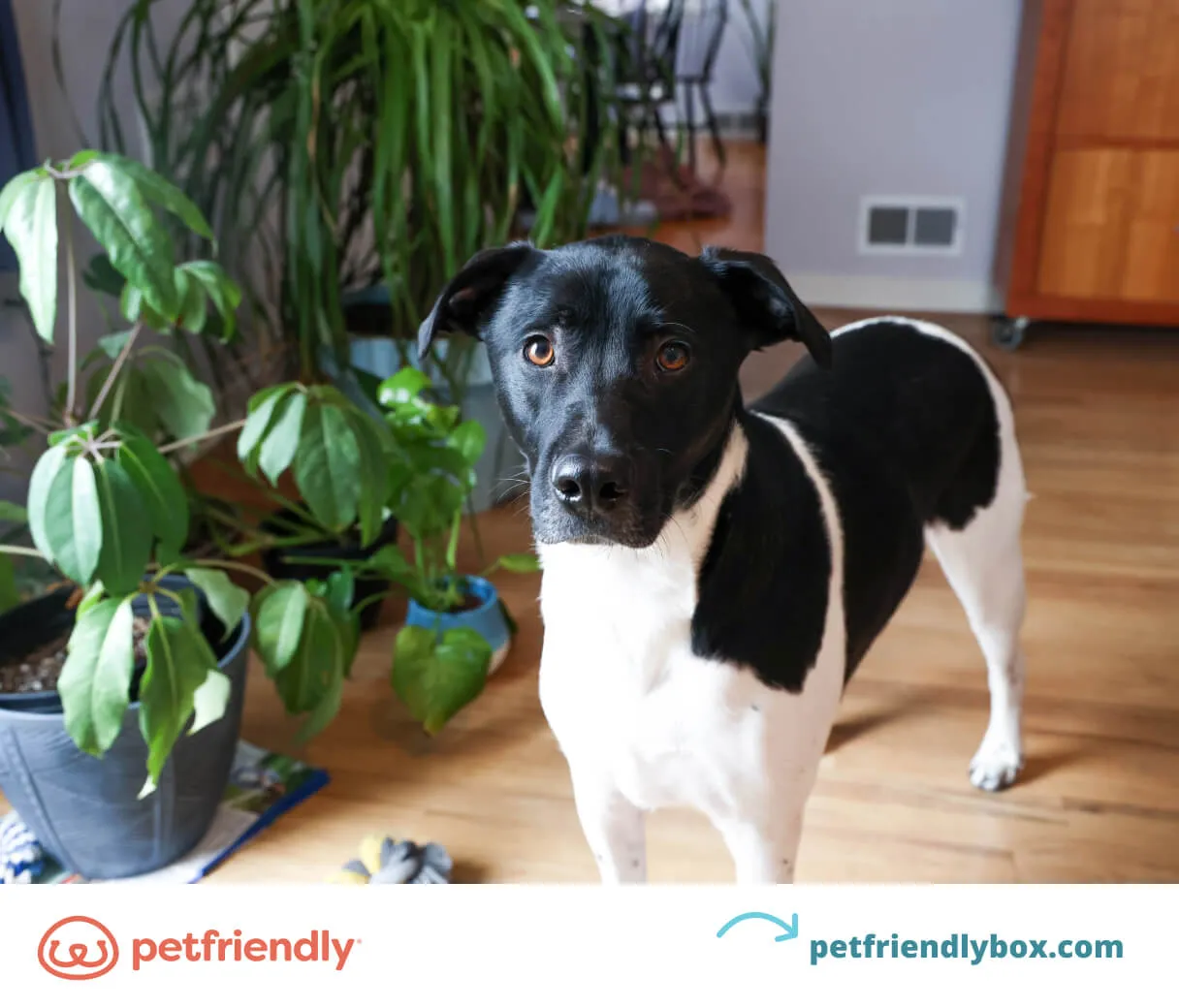 Dog backing away from a person, demonstrating the 'back up' command
Dog backing away from a person, demonstrating the 'back up' command
How to teach your dog to back up
Before teaching “back up,” ensure you are in an open area with sufficient room for movement, such as a hallway or an outdoor space. With your dog standing in front of you, take a small step towards them. When your pet instinctively takes a step backward with their hind legs, immediately reward them with a treat. After a few repetitions, start incorporating the command “back” or “back up” as they move backward. Through consistent practice, your dog will learn to automatically walk backward upon hearing the verbal command.
8. Shake Paws
Teaching your dog to “shake paws” is a classic and easy-to-learn touch trick that’s always a crowd-pleaser. Simple and fun tricks like “shake” are wonderful for showing off your dog’s intelligence and fostering positive interactions with friends and family.
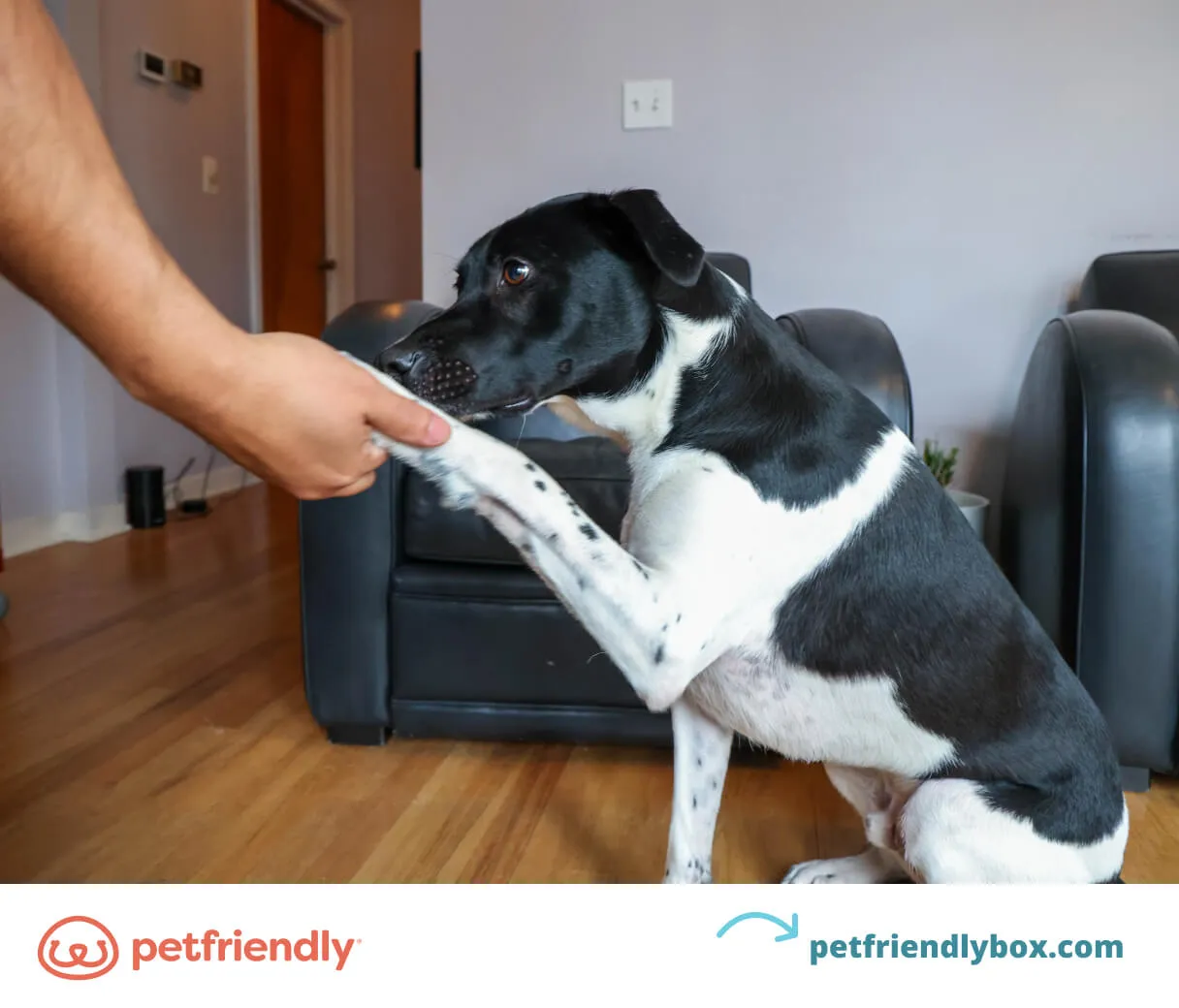 Dog shaking paws with a person, demonstrating the 'shake' trick
Dog shaking paws with a person, demonstrating the 'shake' trick
How to teach your dog to shake hands (paws)
Start by having your dog in a sitting position. Hold a small treat in your closed hand, just out of their reach, in front of your dog. Gently repeat the phrase “shake” while lightly tapping one of your dog’s front feet with your other hand. Most dogs will naturally raise their other paw in an attempt to get the treat. When your dog raises their paw, catch it with your hand, say your command word, and reward them with the treat. This helps your dog associate the command with the action. Repeat these steps until your dog automatically lifts their paw with the command.
9. Play Dead (or Rollover)
This fun skill, often referred to as “play dead” or “rollover,” isn’t as essential as “sit” or “stay,” but it’s a fantastic new trick to add flair to your pet’s repertoire. As long as your dog knows the “down” command, they should pick up this trick with just a few steps. It’s a great example of good tricks to teach a dog for entertainment.
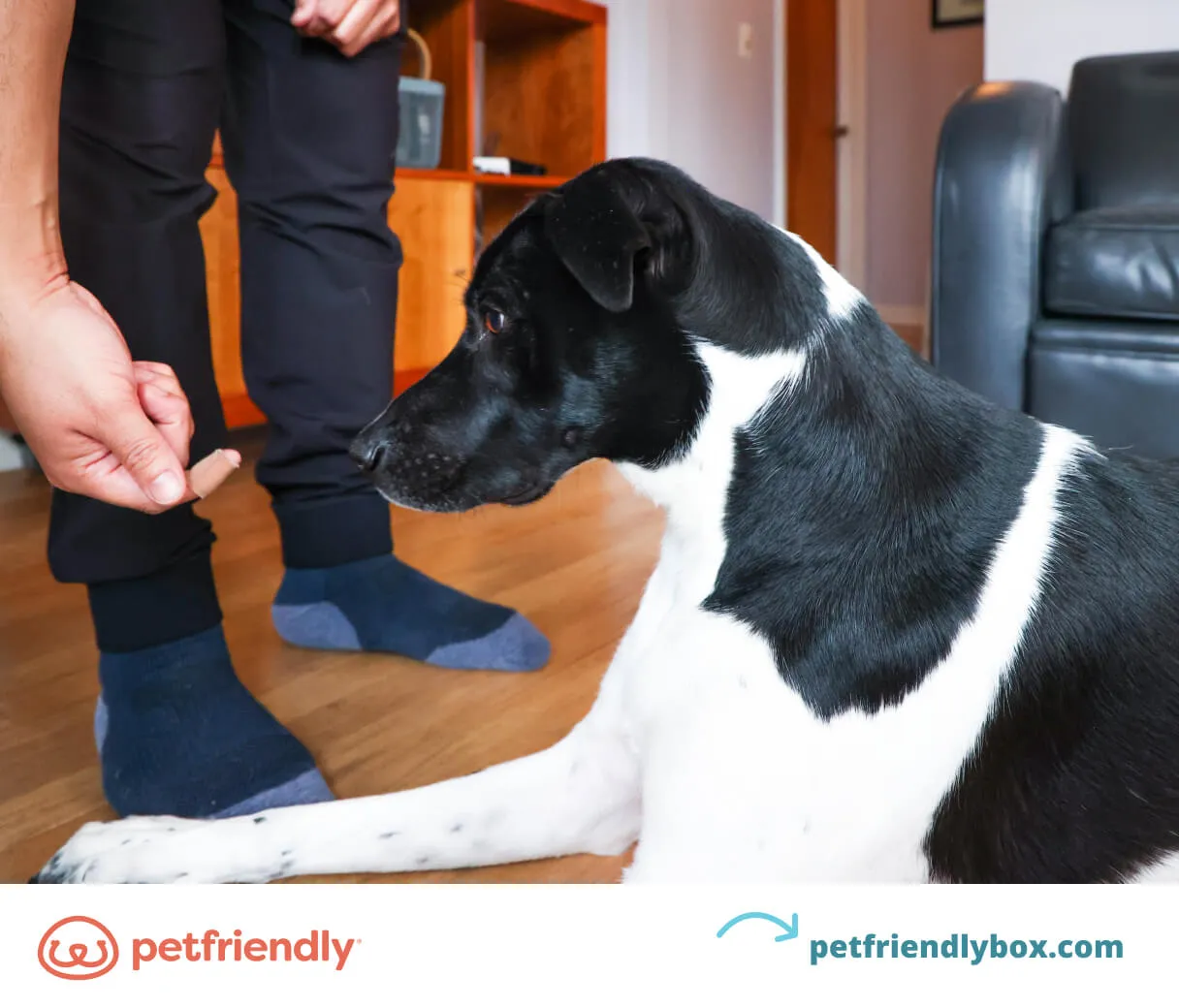 Dog lying on its side, playing dead, with a person's hand nearby
Dog lying on its side, playing dead, with a person's hand nearby
How to teach your dog to play dead
Begin by using the “down” command to get your dog to lie down. Hold a treat close to your dog’s nose and slowly move it sideways, guiding your dog to roll over onto their side as they follow the treat. As soon as your dog is lying on their side, reward them with a treat. Repeat this step several times to familiarize your dog with lying on their side. Once they’re comfortable, start incorporating a verbal command or hand signal. The verbal command could be “play dead,” “bang,” or any word you choose. Many dog owners also add a hand signal, such as forming a finger gun and pointing it at their dog. Once your dog associates the command with the behavior, reward them with a treat.
10. Speak
Barking is a natural and important way for dogs to express themselves, whether they’re seeking attention, communicating with other animals, or asserting territoriality. While barking is normal, sometimes pet parents need their dogs to be quiet. Teaching your dog to “speak” on command can paradoxically help with impulse control and manage excessive barking by teaching them when it’s acceptable to vocalize.
 Dog barking excitedly at its owner, demonstrating the 'speak' command
Dog barking excitedly at its owner, demonstrating the 'speak' command
How to teach your dog to speak
With your dog positioned in front of you, make it clear that you have a highly desirable reward, such as a favorite tennis ball, another toy, or a high-value treat. If your pet knows other tricks, they might offer a few to try and earn the reward. Wait patiently for your dog to make a noise or bark out of excitement or frustration. The instant your pet vocalizes, mark the behavior with the command “speak” and immediately reward them. Repeat this process until your dog understands how to “speak” on command. You might also want to explore different things to train your dog to broaden their skillset.
11. Take a Bow
The “bow” command comes quite naturally to some pets, especially those who frequently stretch in this position. Instead of simply saying “ooooh, big stretch” when your pet assumes this posture, seize the opportunity to reinforce this natural behavior by using the command “bow” or “take a bow.” It’s an elegant and relatively simple addition to your list of good tricks to teach a dog.
 Dog in a bowing position, front paws extended and hindquarters raised, demonstrating 'take a bow'
Dog in a bowing position, front paws extended and hindquarters raised, demonstrating 'take a bow'
How to teach your dog to take a bow
With your dog standing in front of you, hold a treat directly in front of their nose. Slowly move the treat downwards towards the floor. Your dog’s nose should follow the treat all the way to the ground. As you lower the treat, say the command “bow” or “take a bow.” When your dog’s front legs are lowered and their hind legs are still standing, reward them with the treat. Repeat this process until your pet performs this dog trick reliably on command.
12. Spin
“Spin” is a lively and fun trick that adds an element of agility to your dog’s skill set. While not an essential obedience command, it’s a delightful trick to teach your new dog and a great way to engage them both mentally and physically. It’s an excellent example of good tricks to teach a dog that are purely for enjoyment.
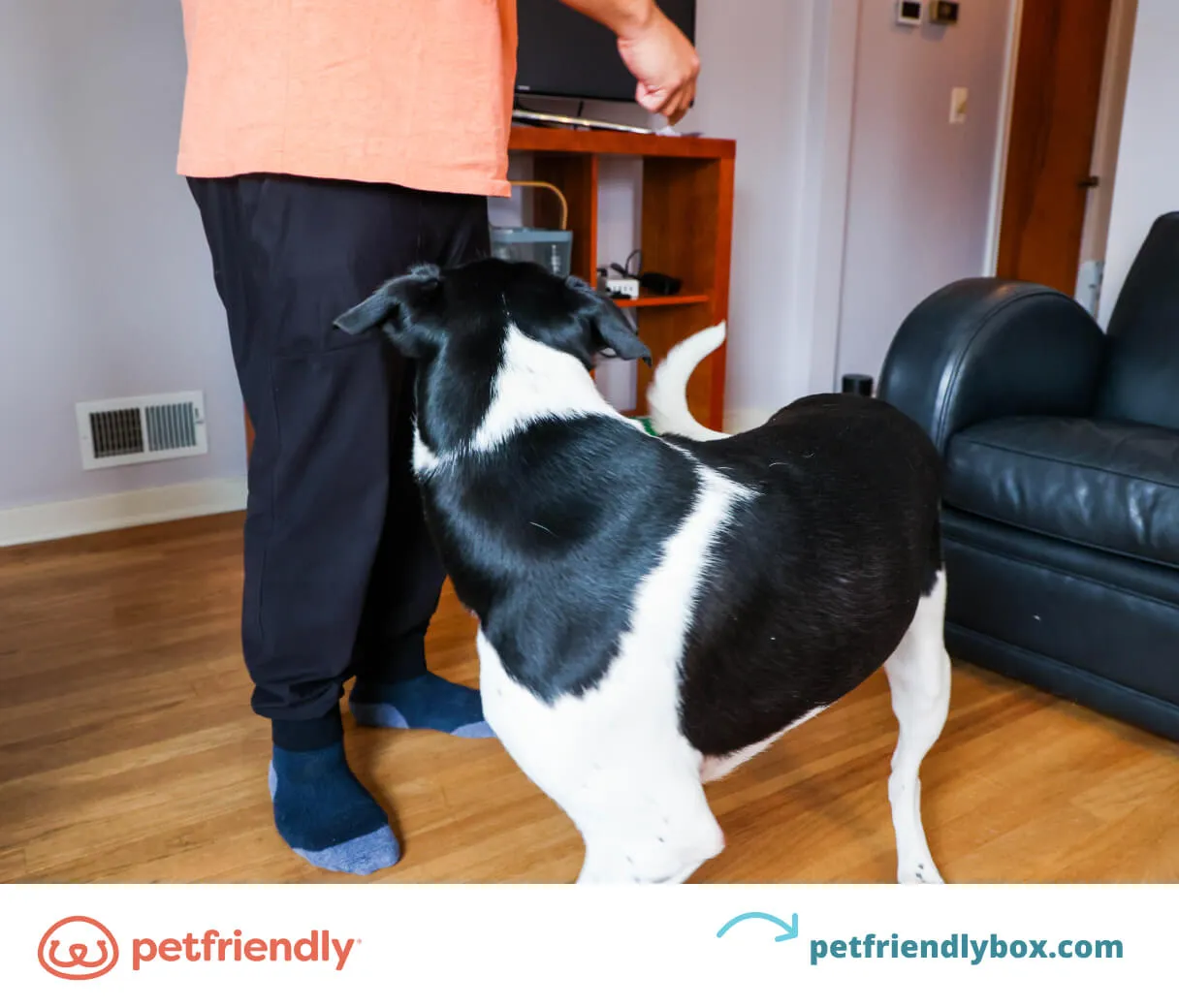 Dog spinning in a circle, following a treat in its owner's hand
Dog spinning in a circle, following a treat in its owner's hand
How to teach your dog to spin
To get your dog to spin, hold a dog treat close to your dog’s nose. Slowly move it towards the side of their head, encouraging your dog to turn their head to follow the treat. As you move the treat, say the command “spin.” Continue moving the treat in a complete circle until your dog spins all the way around, following the lure. Once your dog completes the full circle and is back in their starting position, reward them with a treat. Repeat these steps until your dog makes a complete circle with only the verbal command.
Final Tips for Teaching Your Dog Tricks
Now that you’ve learned some of the easiest tricks for beginners, remembering a few essential tips will significantly aid your training journey and ensure success.
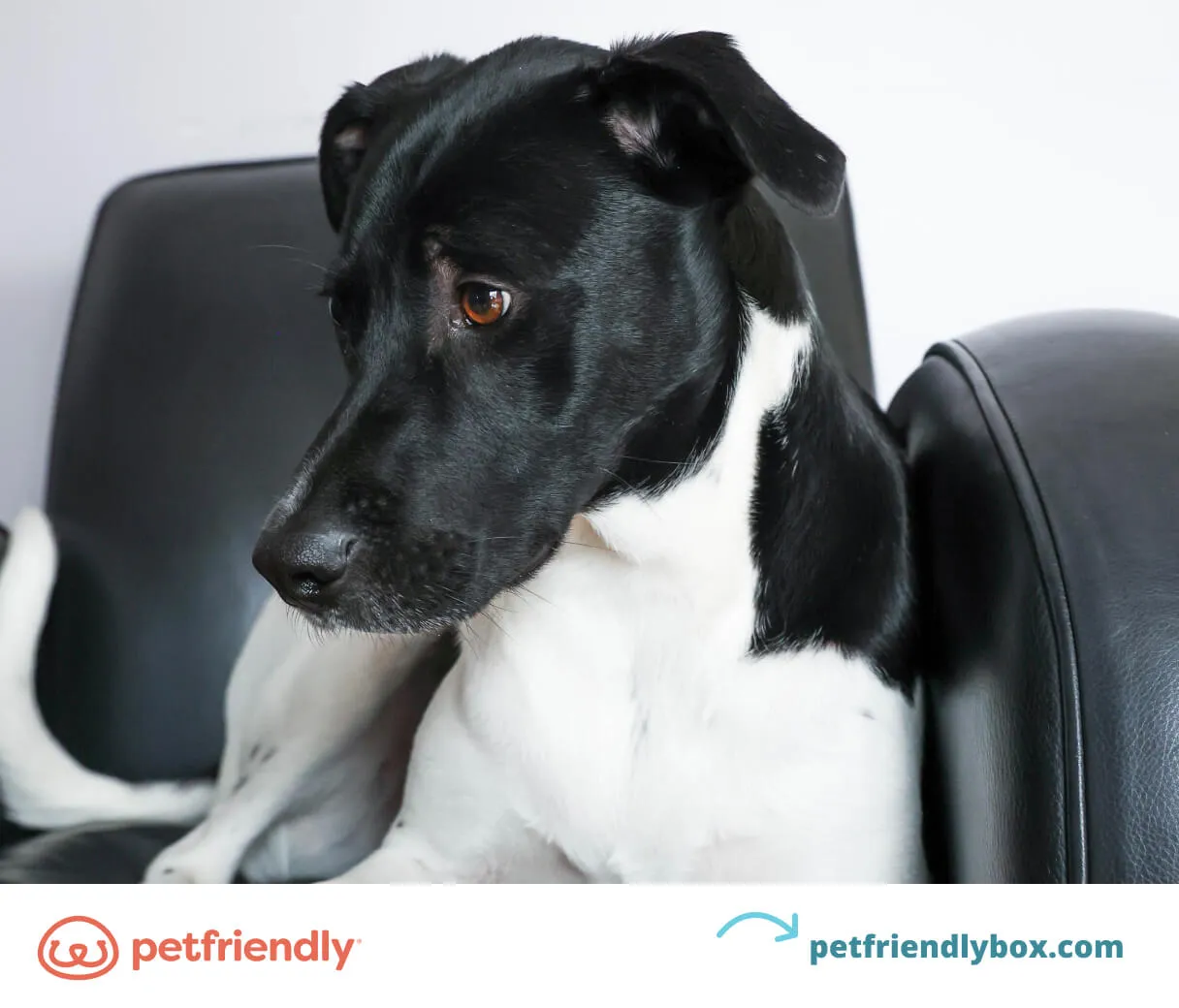 A dog attentively listening to its owner, highlighting final tips for trick training
A dog attentively listening to its owner, highlighting final tips for trick training
- Keep Training Sessions Short: Dogs, especially puppies, have short attention spans. Aim for training sessions that last 5-10 minutes, perhaps two or three times a day, rather than one long session. This keeps training fun and prevents boredom or frustration.
- Start with Basic Commands: Always build a strong foundation with basic obedience commands like “sit” and “stay” before moving on to more complex or “fun” tricks.
- Use High-Value Rewards: While training, use small, soft, and enticing treats that your dog loves. These act as powerful motivators. You can also use pieces of their regular kibble to avoid overfeeding.
- Time Training Around Meals: Planning training sessions before your dog’s meal times can increase their motivation to work for treats, as they will be naturally hungrier.
- Be Patient and Consistent: Not all dogs are quick learners, and every dog learns at their own pace. Be patient, consistent with your commands and rewards, and always end on a positive note.
- Make it Positive and Fun: Training should always be a positive bonding experience for you and your dog. Use positive reinforcement, praise, and avoid punishment. When training is enjoyable, your dog will be more eager to learn.
Behavior and trick training is a wonderful way to stimulate your pet’s brain, strengthen your bond, and ensure they are a well-adjusted member of your family. Remember, consistency and a positive attitude are key. Have fun on your training adventure!
